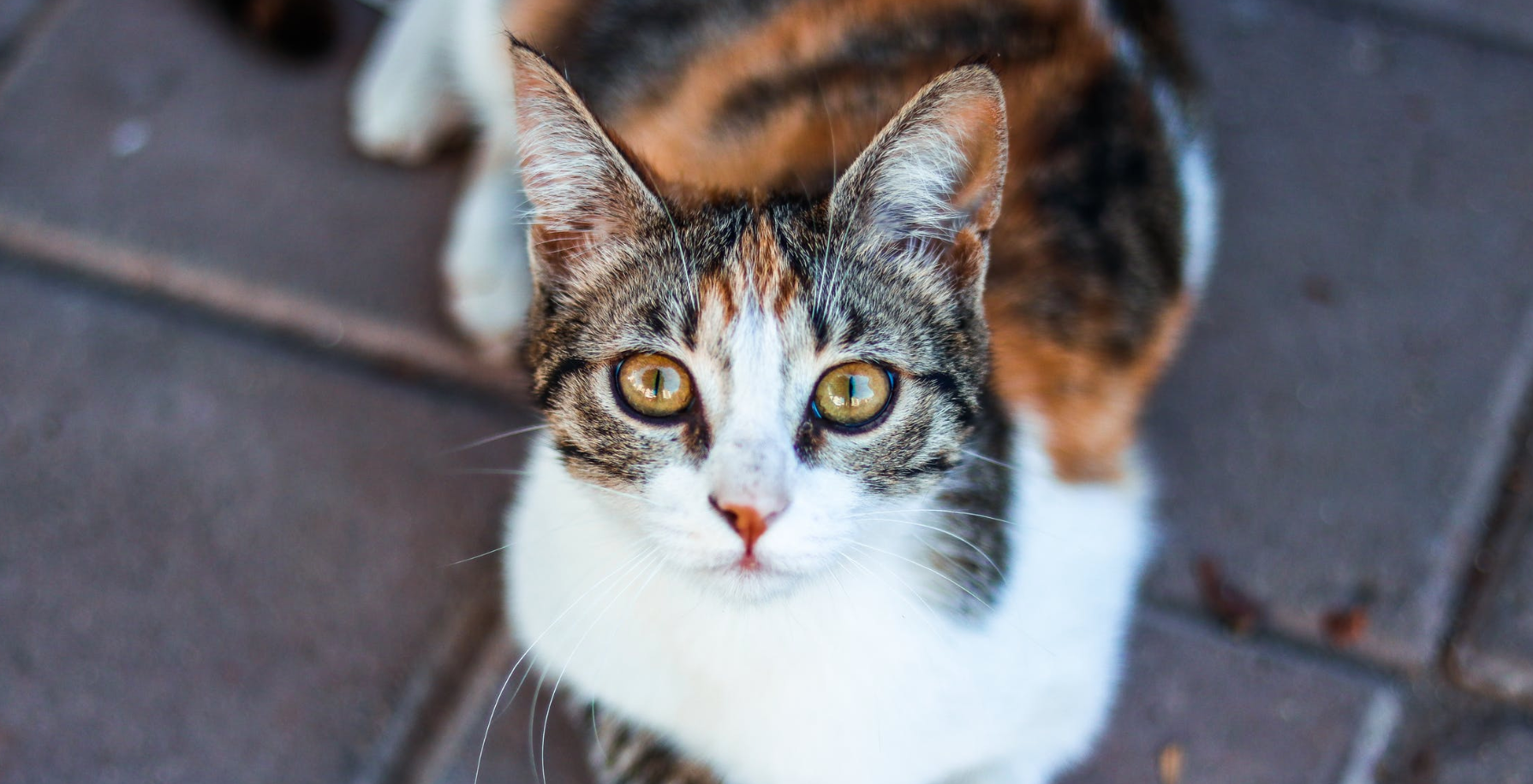How To Spot The Difference Between Calico and Tortie Cats
Calico and tortoiseshell cats are best known for their beautiful multicolored coats of black, orange and white - and their “tortitude”.
Both “calico” and “tortoiseshell” are terms that refer to the color and pattern of a cat’s coat and do not actually refer to the cat’s breed. So a domestic shorthair cat can be a tortoiseshell just as much as a Japanese Bobtail can be a calico cat!
To the untrained eye, these gorgeous mosaic-furred felines can be easily confused for one another.
So, how can you spot the difference between a calico cat and a tortoiseshell cat? Read on!
Tortoiseshell Cats

Tortoiseshell Cats, often called “torties” for short, have a combination of two colors, normally black and orange displaying in a patchwork or mosaic. Their mottled coats are as a result of what genetics call Lyonization.
These colors can come in various shades of dilution, from soft grey to brown, ginger, cream, amber, red, and cinnamon - called dilute torties. A dilute tortie may have blue and cream fur instead of black and orange.
However, tortoiseshell cats have no white at all.
Calico Cats
Calico cats are also referred to as “tricolor” or “tortie-and-white” - and sometimes even "piebald" cats! Why? Because calico cats have the same black and orange color as a tortoiseshell cat - but with white, too!

This is the main difference between a calico cat and a tortoiseshell cat. And it all comes down to genetics. Calico cats have an additional genetic condition at work called "piebalding" in which white (i.e. unpigmented) skin and fur is expressed. These patches of white may be rather small and interwoven, or relatively large and cover almost the entire body.
Even a cat with mottled tortoiseshell patches will be considered a calico if she has significant amounts of white in her coloring thanks to her genetics!
Like torties, calico cats can also come in dilutes.
 A dilute calico with cute pink toe beans.
A dilute calico with cute pink toe beans.
"Torbie" or Tortoiseshell Tabbies
You may have heard the term “torbie” being tossed around, too. Torbie is short for “tortoiseshell tabby”, and is a patched tabby, or one with brown tabby patterns instead of black fur.

Did you know that almost ALL calico and tortie cats are born female? Male tortoiseshell or calico cats are possible, but extremely rare. The allele that determines tortoiseshell expression is carried on the X chromosome, of which females have two (XX), one expressing orange and one expressing black, simultaneously.
Males only have one X chromosome (XY), and the allele is not carried on the Y chromosome - so they are normally either all orange, or all black. Rarely, a male can inherit two X chromosomes along with the Y chromosome (XXY), which would then undergo Lyonization just as in a female cat. This is known as Klinefelter Syndrome, which renders the cat sterile and can cause cognitive and developmental issues as well as other medical difficulties.
Updated 4/21/23
Sources: bio.miami.edu/dana/dox/calico.html, https://letstalkscience.ca/educational-resources/stem-in-context/science-behind-calico-cats-colours

















My mother had a calico named Trey with soft blue/gray and peach markings. Then I got one, Phyllis, with black and dark orange markings. Phyllis’s bold colors made Trey look like she had been bleached!! LOL. They were both precious girls. ❤️
My cat Josie started life as a mostly grey and white long haired kitty with one orange ear. Over the years, she has gotten more and more orange and black blended with white and grey. It’s quite beautiful but I don’t know if that qualifies her as a calico or what.
I am blessed to have 3 torties; Cleo, Dianna, and Bonnie. I have one “Torbie,” “a tortie, tabby mix,” and one calico, Callie. They are beautiful cats. Dona
I didn’t know that there’s a tortie coloring in cats. I was told that black calico cats were rare. Now I know they are not. My sister has three calico kittens outside. Thank you for the information on these pretty little things ❤️.
I have my first calico! I always wanted one, but every time I had an “opening”, another poor kitten needed a home – and of course, I took them in. Our Pumpkin is mostly white, with beautiful gray-to-almost-black and peach colored patches. The coloring on her petite face is divided exactly in the center – the left half is peach, and the right is gray. Her cute little butt is the exact opposite – the left half is gray, and the right is peach. :-) Although I’ve loved all of my cats, she is, without question, the most beautiful one I’ve ever had.
Leave a comment